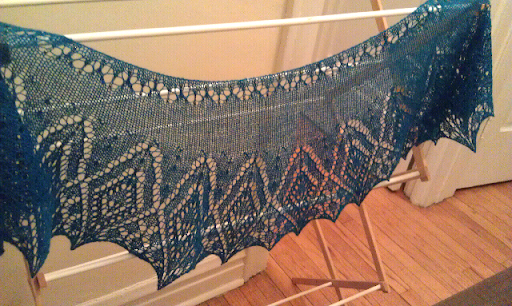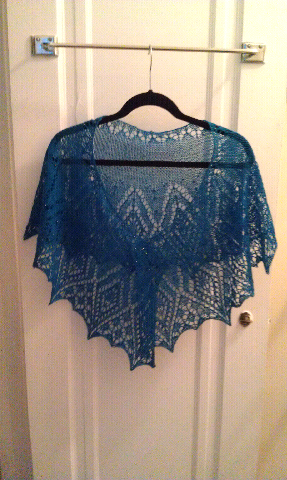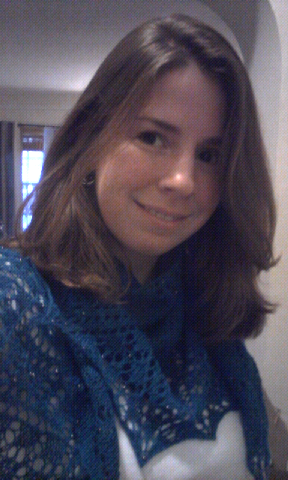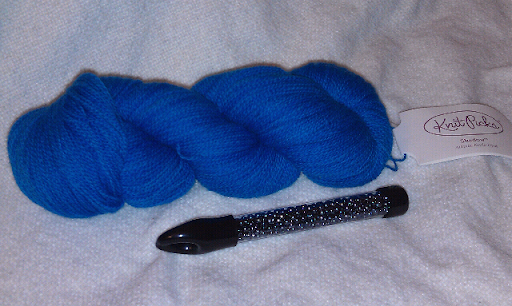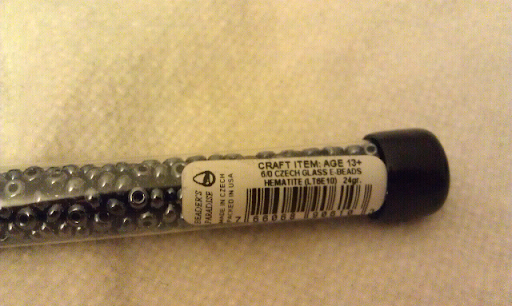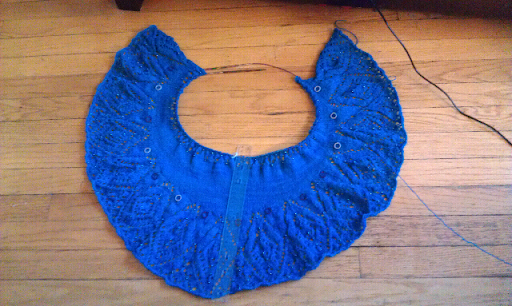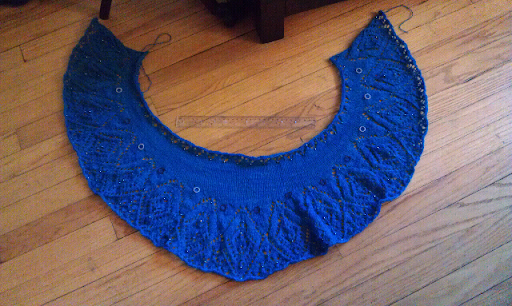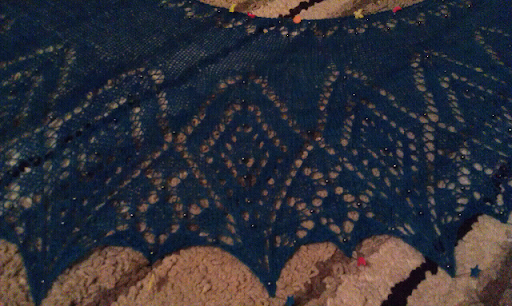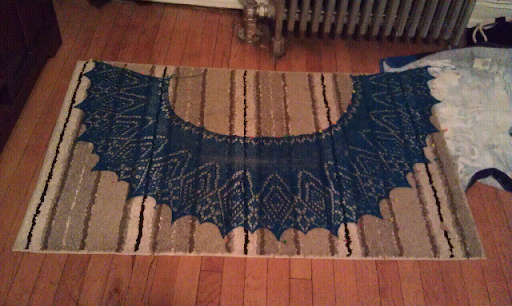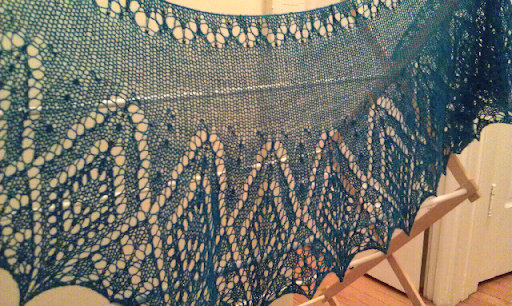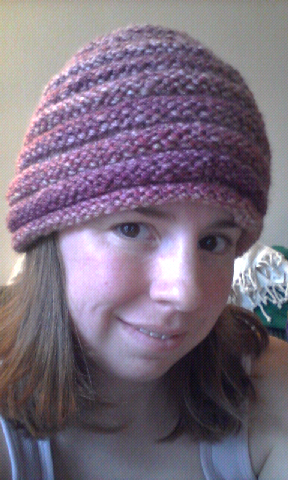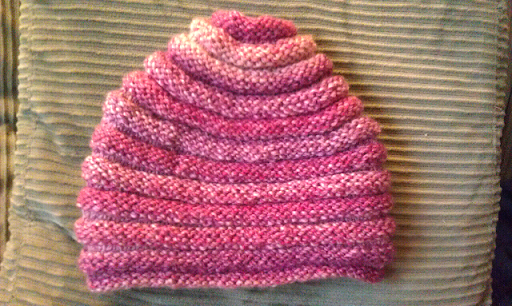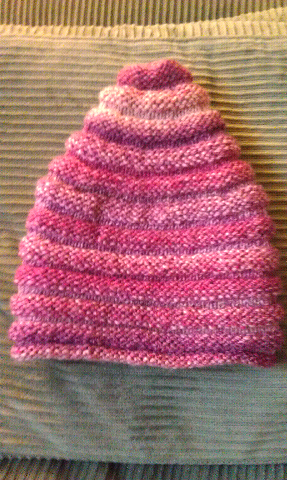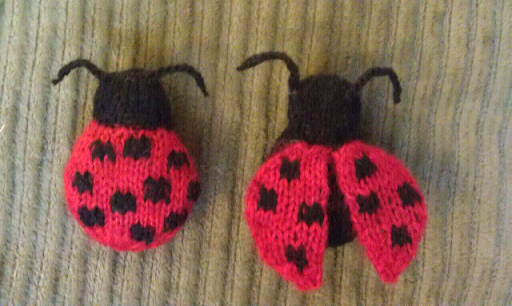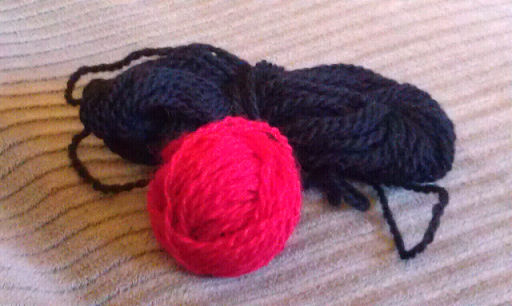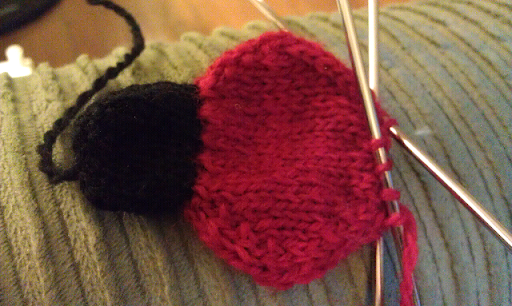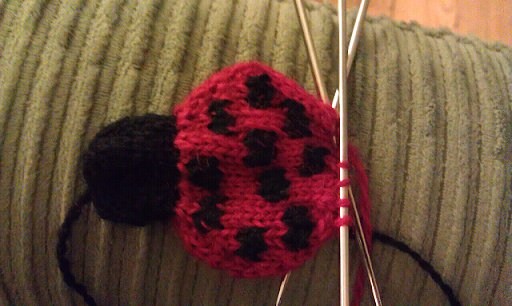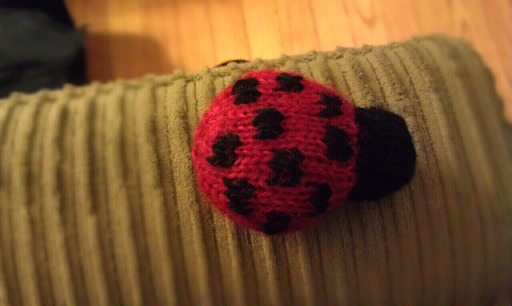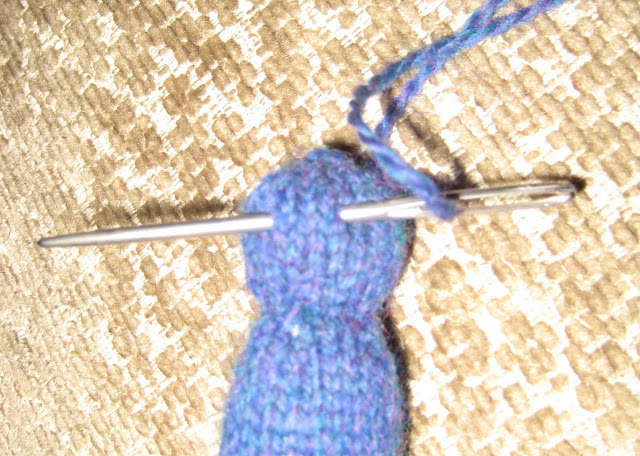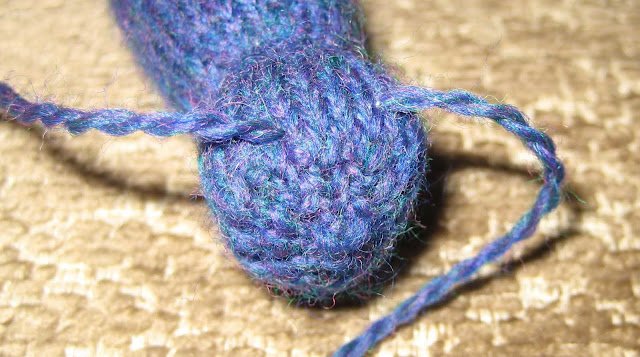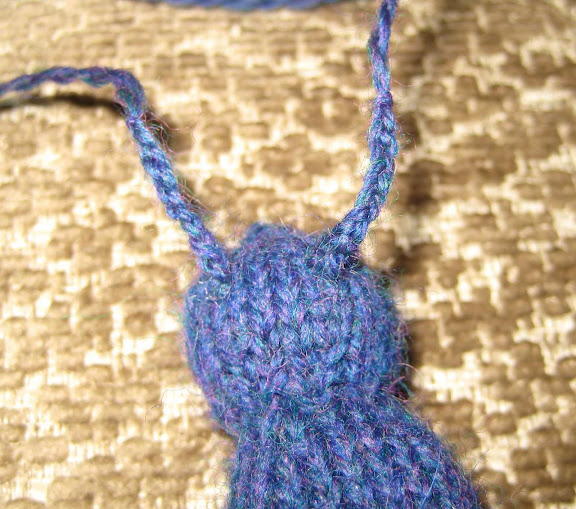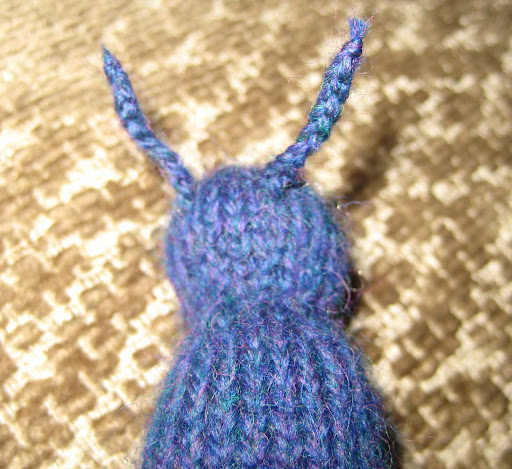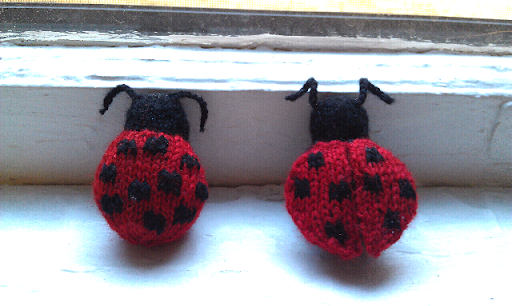I had so much fun with the Polaris shawl that I decided to join into Susana IC's January mystery knit along. She released the first clue on Jan 8, and I joined in on Jan 11 (plenty of time to finish before the second clue!)
I had two tubes of Toho Round Seed Beads 6/0 'Transparent Rainbow Crystal' 8 Gram (this is my best guess at the color since the label isn't clear), so I figured that this should be enough beads for the project. The transparent crystal color looks great with the yarn. KnitPicks Shadow Kettle Dyed in Altitude (this version of Shadow lace yarn is discontinued.) I was initially going to use a white/pearl colored bead, but since this pattern is a mystery I didn't know how many beads I would need to finish the project.
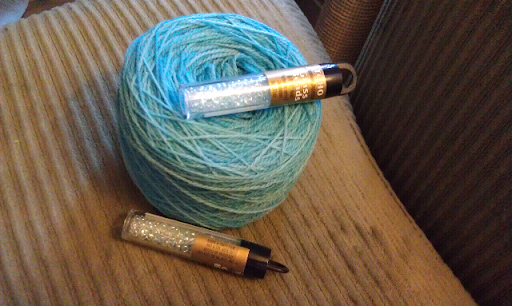
I think I started with 49 (48 g maybe) of wool. I know that the ball was only a little short but I forget to write down the final number. I will assume 49 g when I do my final yardage calculations.
Clue 1: I finished the first clue the same day that I purchased the pattern. This isn't so surprising since there are only 6 rows of the lace released. I was a little concerned about "nupps"" until I realized that they are just bobbles.
Susana IC designed the first shawl that I made. So far, the major difference between the two is that some of the shape of the hem is apparent from the knitting, where in Polaris it came more from the blocking. 43 g of wool left (*Note that I had gotten 2 sections into row 7 when I remembered to weigh the wool.)
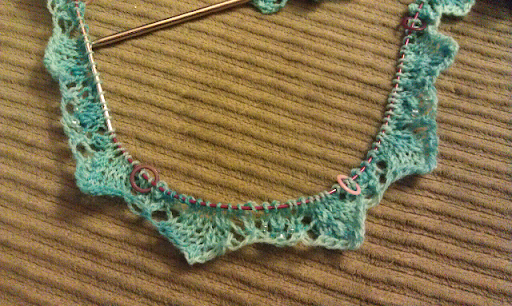
The end of clue 1.
Clue 2: Two minor disappointments from my first impression of clue 2. 1) I only get 8 more rows of the lace pattern, I was hoping that I would get more to work on. (This is what I get for doing a mystery project!) 2) There aren't any more beads in these rows. I love the beads I chose for this project, but if there were only going to be beads on the very edge, then I would have had enough of the white pearl ones.
Don't get me wrong, I still love this project. The suspense of working on it a little bit at a time keeps it fresh and exciting. The nupps are going to look fantastic when it is stretched out and blocked. 37 g remain after this clue has been completed.

Clue 3: Only 8 more lace rows. No more beads or nupps for these new rows. I read on one of the message boards that there are 100 beads (if you leave nupps as they are) required for this project. I am making the medium size, so I've only used 39 beads thus far. There will be some more beads coming up!
Don't get me wrong, I still love this project. The suspense of working on it a little bit at a time keeps it fresh and exciting. The nupps are going to look fantastic when it is stretched out and blocked. 37 g remain after this clue has been completed.

Clue 3: Only 8 more lace rows. No more beads or nupps for these new rows. I read on one of the message boards that there are 100 beads (if you leave nupps as they are) required for this project. I am making the medium size, so I've only used 39 beads thus far. There will be some more beads coming up!
31 g remain after clue 3 is complete. Yikes!!!
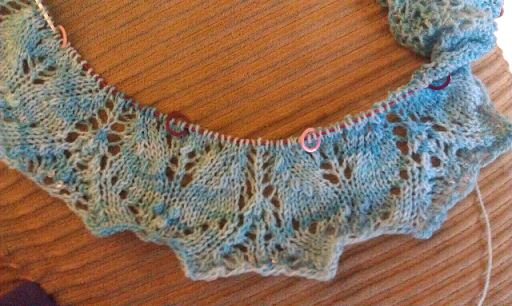
Clue 4: 14 new rows, wahoo! These rows basically repeat some rows we had previously (not a complaint, just an observation.) There were no more beads or nupps, so maybe they are along the bindoff edge like in Polairs? 24g of wool remaining at the end of this clue.
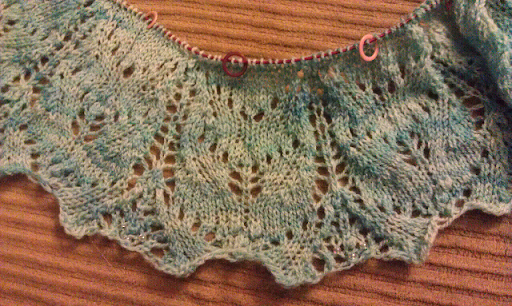
Clue 5: It is time for short rows! This is the first clue that I didn't start and complete on the day I received it. I was working on another shawlette, and I was almost done with the short rows. I decided that I should finish that project before working on clue 5.
I have been looking at the spoiler thread to try to decide if I want to use beads or nupps on the short rows. I know that there will be beads at the end, and it would be nice to have some in the middle, too. I am going to try alternating beads and nupps, even though I have not seen a photo of this yet. The center nupp (the first one in short rows) will be a bead. Each nupp row had one nupp and one bead (i.e. row 5 the first was a nupp, the second a bead to keep up with the alternating..
When I made my last nupp on either end 3 stitches remained on each side. I did two more rows so I could complete the nupp on the purl side.
14 g remain at the end of clue 5. I will have no problems with yardage on this project! I just hope the shawl will be large enough.
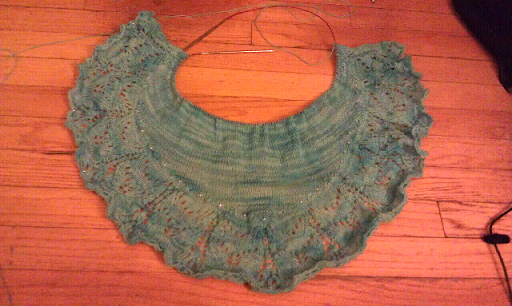
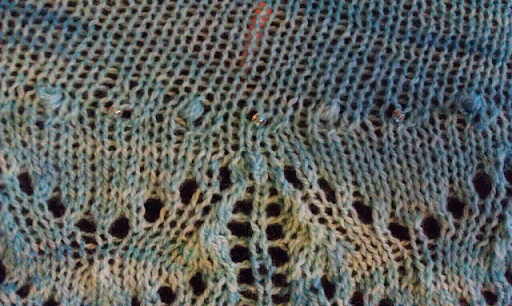
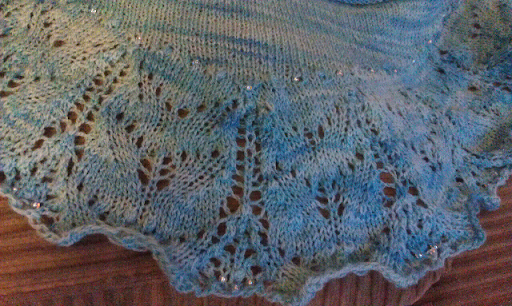
Clue 6: The end! 12 g remain. 37 g (or ~325 yards) were consumed in this project. I used less than one tube of beads (maybe 50/60% of one tube.)
I think I could have made the large version with the amount of yarn I have left. I prefer the size of my polairs to this shawl, but I have not blocked it yet. I know it will grow with blcoking, but the bind off is tight (per pattern instructions) so that won't grow too much. I expected to have a lot less yarn left over....
Unblocked (but stretched with my feet) the bind off edge (no sides included) is 34 inches.
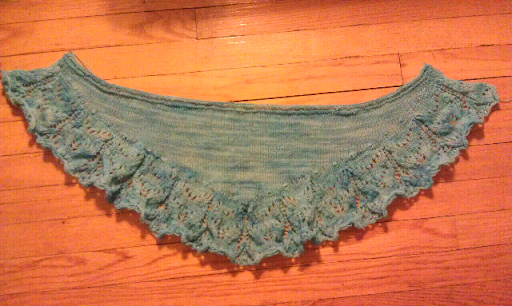
Finishing: This time I remembered to weave in my loose ends before blocking. Once the shawl was blocked, I was no longer concerned about the size. Sure, a little larger would be nice, but it is definitely not too small to be useful.

I wasn't sure how I liked the top edging. I liked the simple beads, but I thought the K and P rows were asymmetric in respect to the beads. Once the shawl was blocked, this was no longer an issue and I am so happy I followed the pattern instructions!
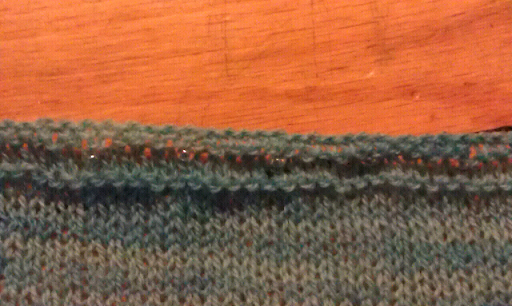
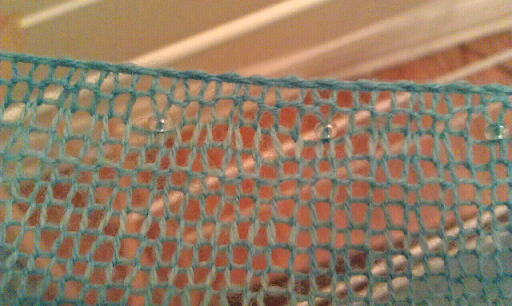
The top edge of the shawl unblocked (left) and blocked (right). The beads are really subtle.
This shawl is stunning. I had some slight doubts about the design while I was knitting, but once it was blocked I fell completely in love. (The doubts weren't about the beauty of the shawl, but more about whether or not it was my taste.) I still don't know the name, but it reminds me of spring and tulips.
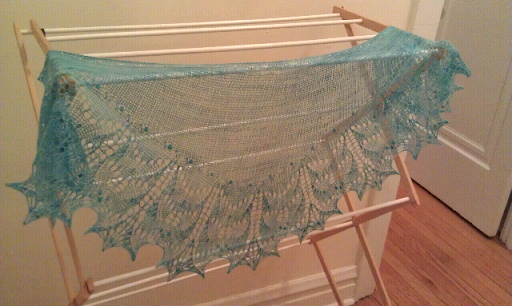
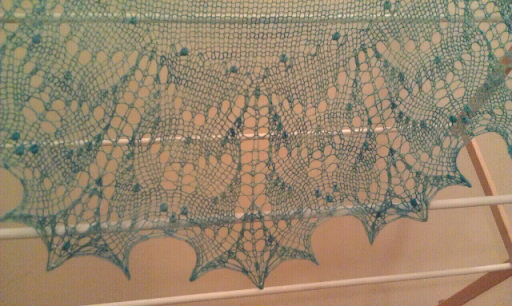
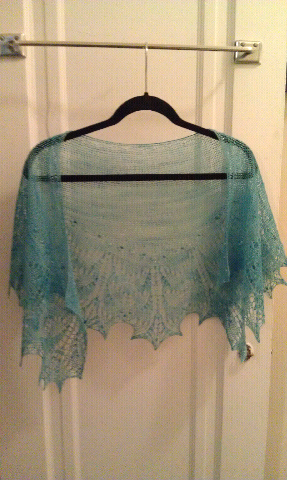
What are the benefits of a mystery KAL? (Besides the fact that it is fun!) You get the pattern at a reduced price. The pace is slow so you don't get frustrated by a project, and are able to work on other things in between. I would definitely make this shawl again, and I hope there is another mystery KAL soon!



